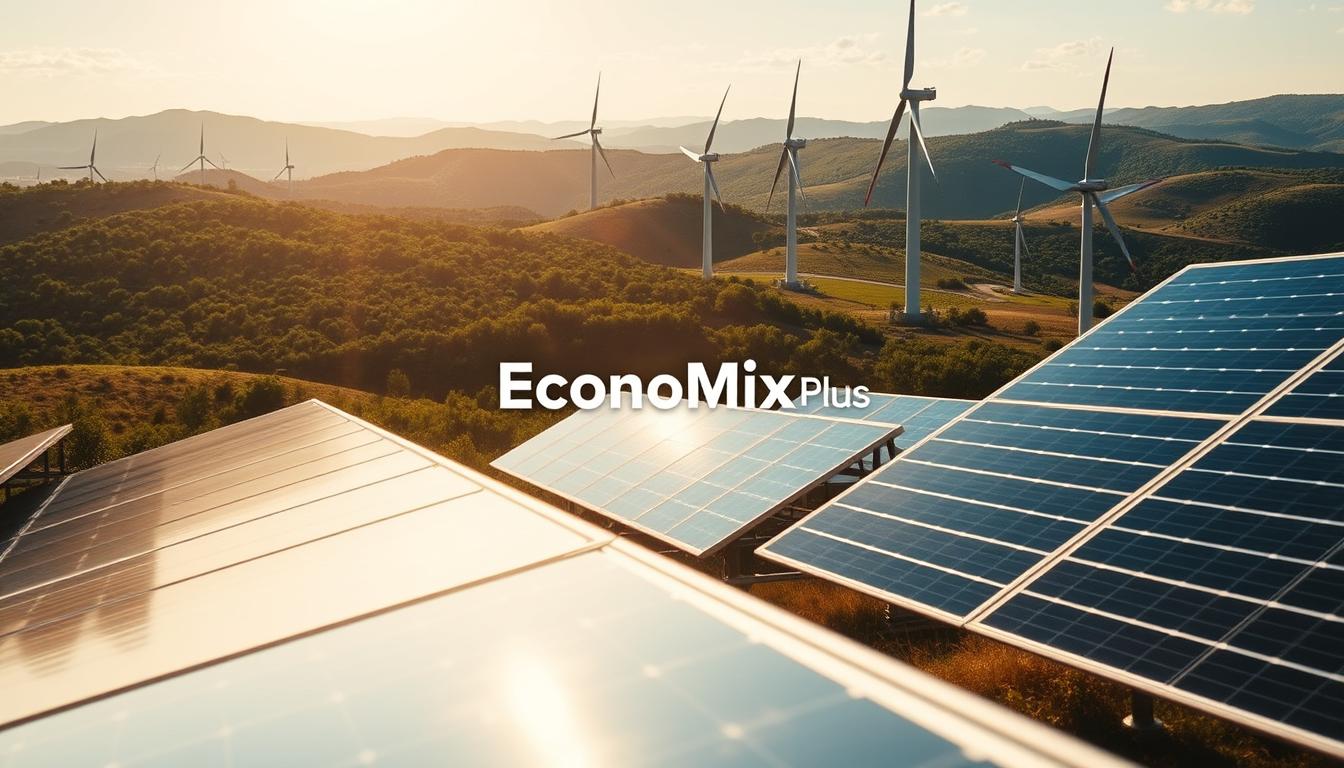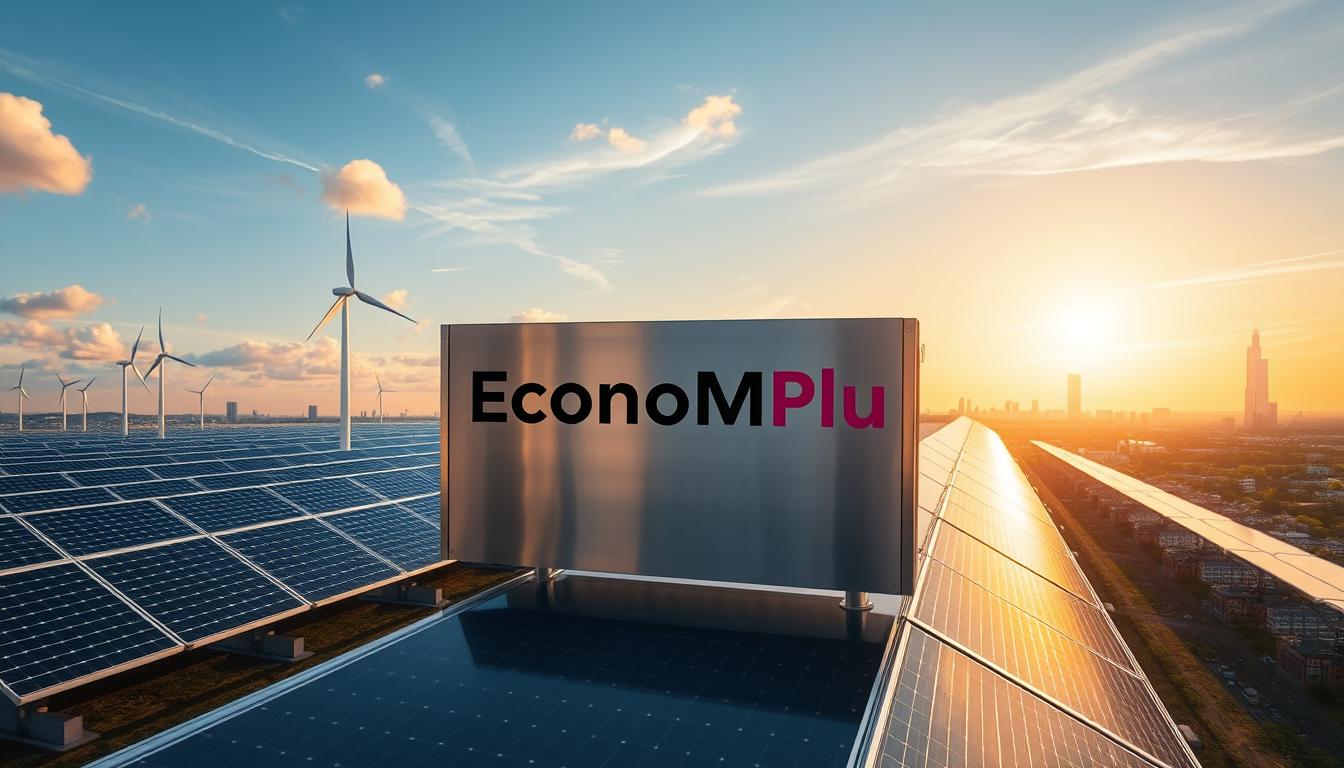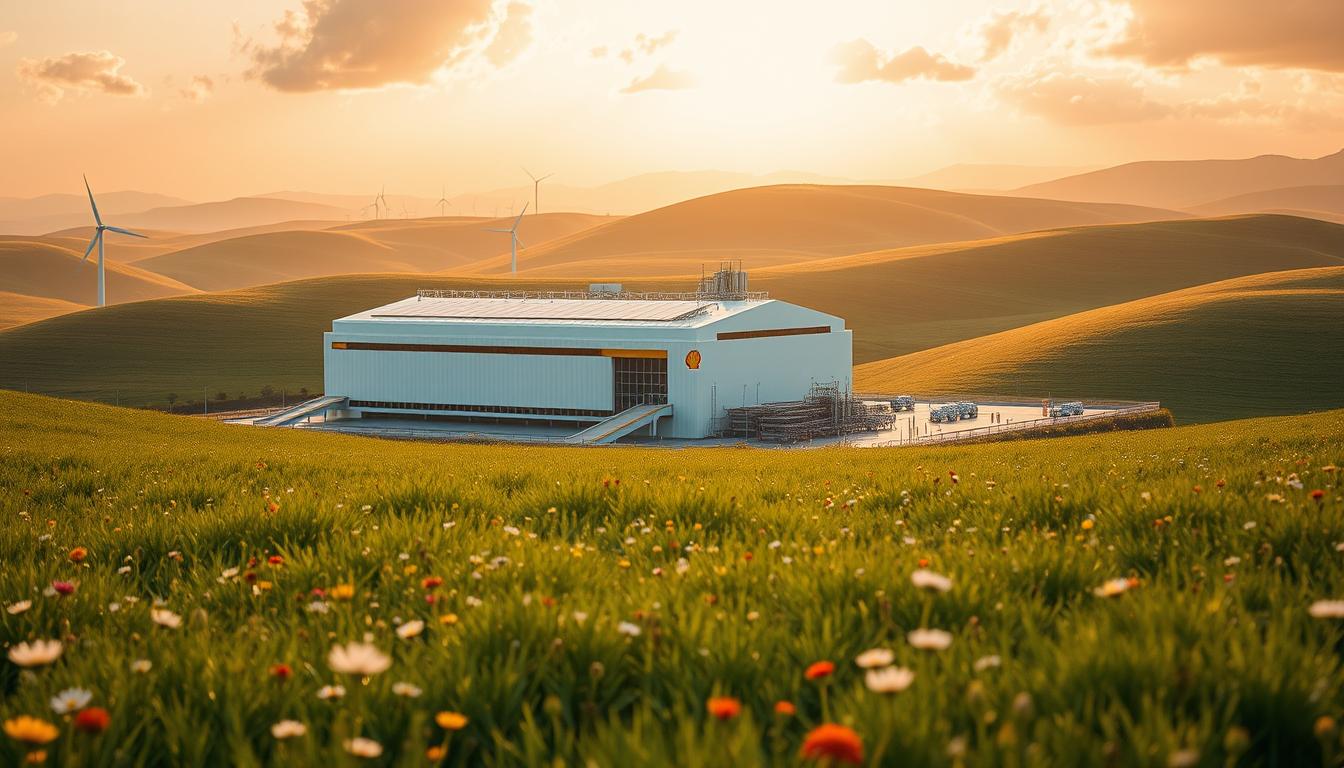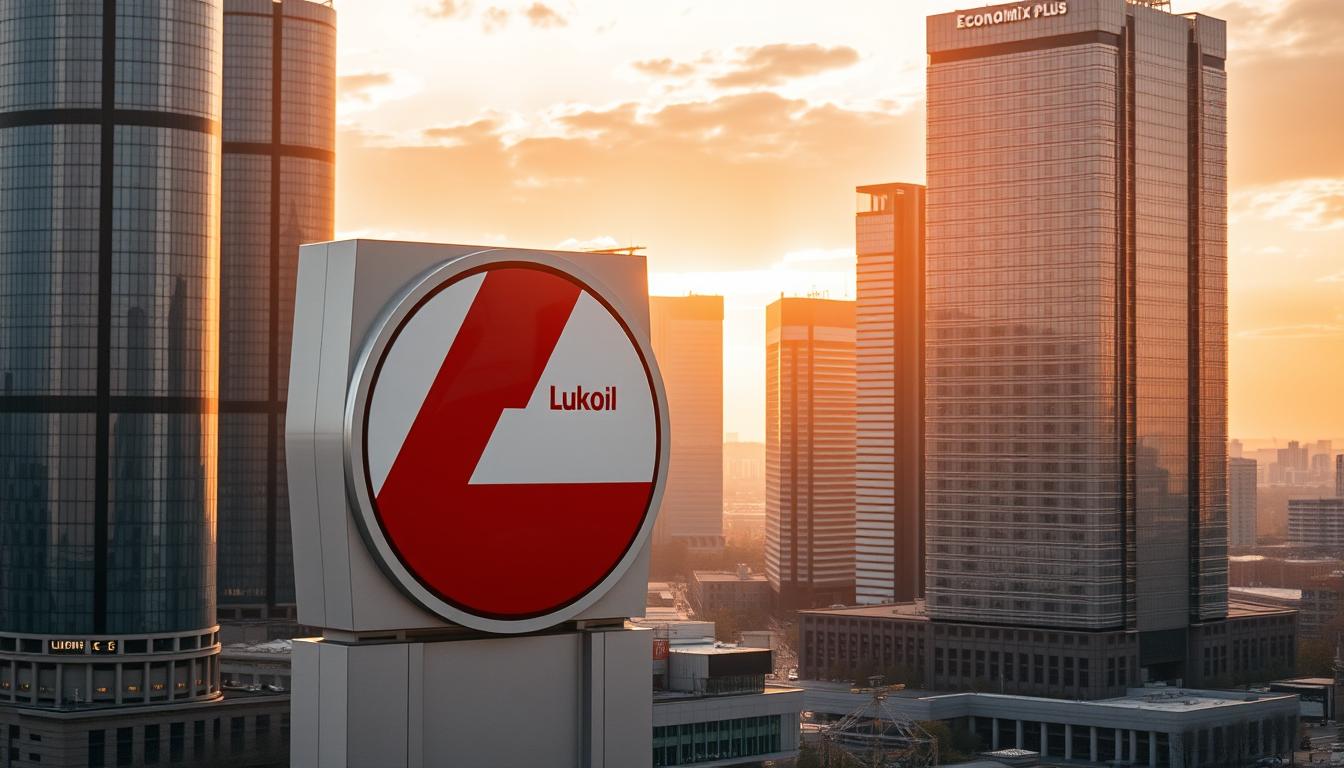The world is changing fast, moving towards cleaner energy and fighting climate change. Big oil companies like Shell must change too to stay important.
Shell’s sustainability initiatives and renewable energy investments are key. They help cut down on carbon emissions. The company is also working to use energy better and find new sources.
As the energy world keeps changing, Shell’s ability to innovate and adapt is vital. By focusing on clean energy, Shell is ready for a greener future.
Key Takeaways
- Shell is diversifying its energy portfolio through investments in renewable energy.
- The company is improving energy efficiency to reduce its carbon footprint.
- Shell’s post-oil strategies include reducing reliance on fossil fuels.
- The company’s sustainability initiatives are critical for its long-term success.
- Shell is adapting its business model to remain relevant in a changing energy landscape.
Shell’s Current Position in the Global Energy Market
Shell is a big name in the energy world, even though it used to rely a lot on fossil fuels. It has been a key player in oil and gas for many years. Now, it’s showing it can change with the times.
Historical Dependence on Oil and Gas
Shell’s roots are in oil and gas. Its business has always focused on finding, making, and selling these fuels. But, Shell’s CEO says, “Our history is built on oil and gas, but our future is in a more diverse energy mix.” This mix is both a blessing and a challenge as Shell moves towards cleaner energy.
Shell’s old skills in oil and gas are strong. But, it also needs to branch out and explore new energy areas. This is to stay ahead in a changing world.
Financial Overview and Market Share
Shell has kept its finances strong, even when oil prices swing. It’s stayed true to its promises to investors and kept spending on new projects. In the first quarter, it made $9.28 billion in cash flow from operations. This shows Shell can handle tough markets well.
Shell is a big name in the energy world. Its financial health is watched closely. How well it adapts to new trends will shape its future.
Recent Performance Indicators
Shell is doing well in the energy shift while keeping its finances stable. It’s working hard to mix up its energy sources and invest in new tech. This shows it’s serious about staying big in the energy market.
“We’re committed to playing a leading role in the energy transition, and we’re taking significant steps to reduce our carbon footprint while meeting the world’s growing energy needs.”
As Shell keeps changing its strategy, its progress will be watched closely. It needs to balance its old strengths with new energy and tech investments. This balance will be key to its success.
The Shifting Energy Landscape
The world is moving towards a low-carbon economy fast. This is thanks to government actions, new tech, and what people want. Companies like Shell are changing to keep up with these big changes.
Global Transition Toward Renewable Energy
The world is turning to renewable energy to cut down carbon emissions and fight climate change. Solar and wind power are leading the way in this change.
Renewable energy is now a big part of new power plants worldwide. This change is because of environmental reasons and because renewable tech is getting cheaper.

Policy Changes and Regulatory Pressures
World governments are making rules to help switch to renewable energy and lower emissions. They’re using carbon pricing, giving tax breaks for green projects, and setting strict emission rules.
For example, the European Union aims to be carbon neutral by 2050. This is pushing investments in clean energy. China and India are also making big moves towards renewable energy.
“The transition to a low-carbon economy is not just an environmental imperative but also an economic opportunity. Companies that adapt quickly to this new landscape are likely to thrive.”
Consumer Demand for Sustainable Energy Solutions
People want cleaner, greener energy, which is boosting the renewable energy sector. This demand is not just from homes; businesses are also looking to cut their carbon footprint by using renewable energy.
| Year | Renewable Energy Capacity (GW) | Growth Rate (%) |
|---|---|---|
| 2018 | 2350 | 7.5 |
| 2019 | 2530 | 7.6 |
| 2020 | 2830 | 11.8 |
The move to renewable energy will keep going, thanks to new tech, government support, and more people wanting it. Companies like Shell are changing by adding more green energy to their mix and investing in renewables.
How Shell Plans to Stay Relevant in a Post-Oil Economy?
As the world moves towards a low-carbon economy, Shell is changing its business model. The company has a detailed plan to cut its carbon footprint. It aims to stay strong in the global energy market.
Energy Transition Strategy Overview
Shell wants to be a net-zero emissions energy business by 2050. It plans to grow its renewable energy, boost energy efficiency, and use less fossil fuels. The strategy covers many parts of the business, from making energy to working with customers.

Key Pillars of Shell’s Transformation
The transformation focuses on several key areas:
- Increasing renewable energy production through investments in solar and wind power.
- Improving energy efficiency across its operations.
- Developing new energy solutions, such as hydrogen fuel.
- Reducing carbon emissions through various initiatives, including carbon capture and storage.
These pillars are key to Shell’s success in a changing energy world. They help the company stay competitive with more renewable energy.
Timeline for Implementation
Shell has a plan to start its energy transition by 2030, 2040, and 2050. The goal is to be net-zero by 2050, meeting global climate goals. The plan includes gradual changes and big investments in renewable energy and technology.
By setting a clear plan and timeline, Shell is ready for the future. Its focus on cutting carbon and meeting changing consumer needs is key to its success.
Shell’s Renewable Energy Portfolio Expansion
Shell is moving towards a future without oil by growing its renewable energy portfolio. This change aims to mix different types of energy and cut down on oil use.
Renewable energy is key to Shell’s plan for the future. The company is putting a lot of money into shell solar energy, shell wind power, and shell hydrogen initiatives.
Solar Energy Investments and Projects
Shell is investing big in solar energy. It sees solar as a big part of the future energy mix. The company is working on shell solar energy projects worldwide, from big solar farms to small community projects.
- Investment in solar farms: Shell is putting money into large solar farms to boost its green energy.
- Community-based solar projects: The company is also starting small, local solar projects to help communities generate their own energy.

Wind Power Initiatives
Shell is also growing in the wind power field. Its shell wind power plans include onshore and offshore wind farms. This uses Shell’s skill in big energy projects.
Key parts of Shell’s wind power plans are:
- Offshore wind projects: Shell is investing in offshore wind farms for more green energy.
- Onshore wind projects: The company is also working on onshore wind farms to add to its green energy mix.
Hydrogen and Other Alternative Energy Sources
Shell is also looking into shell hydrogen initiatives for alternative energy. Hydrogen is seen as a clean energy source for a low-carbon future.
The company’s work in this area includes:
- Production of green hydrogen: Shell is making green hydrogen through electrolysis with renewable energy.
- Hydrogen fueling infrastructure: The company is also investing in hydrogen fueling stations to meet growing demand for hydrogen.
Shell’s Carbon Neutrality Commitments
Shell aims to become a net-zero emissions energy company by 2050. This is a big step towards a greener future.
Shell wants to cut its environmental impact and achieve carbon neutrality. It’s focusing on several areas. These include lowering emissions from its operations and the products it sells.
Net-Zero Emissions Targets by 2050
Shell has set a goal to reach net-zero emissions by 2050. It plans to do this by reducing emissions in its operations and supply chain.
This includes using more renewable energy and improving energy efficiency. Shell is also working on new technologies to cut emissions.

Carbon Capture and Storage Technologies
Carbon capture and storage (CCS) technologies are key to Shell’s net-zero plan.
CCS captures CO2 emissions from power plants and industrial processes. Then, it stores them underground, reducing emissions in the atmosphere.
Shell is investing in CCS and working with other companies to improve it.
Measuring and Reporting Progress on Sustainability Goals
Shell regularly checks and reports on its sustainability goals. This includes emissions cuts, renewable energy, and other important metrics.
By being open and accountable, Shell wants to gain trust from its stakeholders. It shows its dedication to reaching carbon neutrality.
Restructuring the Business Model
Shell is changing its business model to stay relevant in a world without oil. This big change is key for Shell to keep up with the new energy world. It’s all about being competitive in a market that’s moving towards green energy.
Organizational Changes to Support Transition
Shell is making big organizational changes to move towards sustainable energy. It’s restructuring to focus more on renewable energy and less on oil and gas. This will make Shell more efficient and quick to adapt to market changes.
The company is also going digital to boost its efficiency. It’s using data analytics to make better decisions. This digital push is a big part of Shell’s move to a sustainable business model.
Divestment from Traditional Oil Assets
Shell is selling off some of its old oil assets. This is to cut down on the risks of oil price swings. It’s focusing on sustainable energy projects instead.
Shell is also optimizing its portfolio by keeping only the best assets. It’s keeping those with growth and profit chances, like renewable energy projects.
New Business Units and Focus Areas
Shell is starting new business units for renewable energy like solar and wind. These units will drive innovation and growth in the future energy mix.
Shell is also looking into new focus areas like electric vehicle charging and energy storage. By exploring these areas, Shell wants to stay competitive and relevant in the changing energy world.
These changes show Shell’s commitment to adapting to a post-oil world. It’s all about ensuring Shell’s long-term success and sustainability.
Strategic Partnerships and Acquisitions
Shell is moving forward by forming partnerships and making acquisitions. It’s focusing on renewable energy to prepare for the future. This strategy helps Shell stay competitive and successful.
Key Alliances in the Renewable Sector
Shell is teaming up with companies in solar and wind power. For example, it’s working with Northland Power on offshore wind projects. These partnerships help Shell grow and aim for net-zero emissions by 2050.
Technology Acquisitions Driving Innovation
Shell is investing in new technologies to boost innovation. It’s bought companies that work on energy storage and electric vehicles. For instance, it acquired sonnen to improve its energy services.
Research and Development Collaborations
Shell is also teaming up for research and development. It works with schools and other companies to innovate. This helps Shell develop new, sustainable energy solutions.
Shell’s partnerships, acquisitions, and research are key to its energy transition. They help Shell grow in renewable energy and drive innovation.
Financial Strategy for the Transition Period
Shell’s financial plan supports its big energy transition goals while keeping investor returns high. This is key as the company deals with the energy world’s changes.
Investment Allocation Between Traditional and New Energy
Shell splits its investments between old oil and gas and new energy. This mix helps the company keep up with today’s needs while starting on renewable projects like solar and wind.
The goal is to be a net-zero emissions energy business by 2050. Shell is putting more money into clean energy and less into fossil fuels to reach this goal.
Managing Shareholder Expectations During Transition
It’s important to keep shareholders happy during this big change. Shell has kept its spending and returns steady, even with oil price ups and downs. This shows its dedication to shareholder value.
The company does this by controlling costs, being more efficient, and making smart investments. With a solid financial base, Shell can handle market changes and keep investing in its future.
Long-term Financial Sustainability Plan
Shell’s long-term plan focuses on its energy transition. The goal is to cut carbon emissions while keeping finances strong.
This plan includes more money for renewable energy, better efficiency, and cost control. Shell hopes to stay financially stable and competitive in the evolving energy world.
Digital Transformation in Shell’s Operations
Digital technologies play a big role in Shell’s operations. The company aims to boost efficiency and connect better with customers. As the energy world changes, Shell uses digital tools to move towards a greener future.
Leveraging AI and Big Data for Efficiency
Shell is using artificial intelligence (AI) and big data to get better at what it does. It looks at lots of data to make its operations smoother. For example, AI helps Shell plan maintenance better, cutting down on lost time.
Big data also helps Shell make smart choices. It shows trends and patterns, helping the company find and fix problems.
Smart Energy Solutions and Grid Management
Shell is putting money into smart energy solutions to manage energy better. It’s working on smart grids that can mix renewable energy with traditional sources. This makes energy distribution better and keeps the grid stable.
Smart energy solutions are key for Shell’s shift to cleaner energy. With new tech, Shell can give customers reliable and efficient energy.
Digital Customer Engagement Strategies
Shell is also working on digital customer engagement strategies to make customers happier. It’s creating digital platforms for easy access to services and personalized experiences.
By talking to customers online, Shell can learn what they want. This helps Shell offer better services and build stronger relationships with customers.
| Digital Technology | Application in Shell’s Operations | Benefits |
|---|---|---|
| AI and Big Data | Predictive maintenance, operational optimization | Improved efficiency, reduced downtime |
| Smart Energy Solutions | Smart grids, renewable energy integration | Enhanced grid stability, reliable energy services |
| Digital Customer Engagement | Digital platforms, personalized services | Improved customer experience, increased customer satisfaction |
Shell’s Retail Evolution Strategy
As the energy world changes, Shell is updating its retail plan to keep up.
Shell’s new retail focus has three main parts. It includes turning gas stations into energy centers, growing its electric vehicle charging, and adding new products and services.
Transforming Gas Stations into Energy Hubs
Shell is changing its gas stations into energy centers. They will offer more services and amenities to customers. This includes:
- Convenience stores with more products
- Food and drink services
- Other services not related to fuel
This change aims to make Shell’s sites more appealing and useful. It also hopes to keep customers longer and earn more money.
Electric Vehicle Charging Network Expansion
As electric cars become more popular, Shell is growing its EV charging. Key parts of this effort are:
- Adding fast-charging stations at key spots
- Improving the charging experience with new tech
- Linking EV charging with other Shell services
Shell wants to be a top EV charging provider. It supports the shift to cleaner cars.
New Consumer Products and Services Beyond Fuel
Shell is also looking into new products and services. This includes:
- Digital services to better connect with customers
- Innovative mobility solutions
- Other services that add value
By introducing new items, Shell wants to stay relevant and competitive in the changing energy world.
| Strategy Component | Description | Key Features |
|---|---|---|
| Energy Hubs | Transforming gas stations into multifaceted energy hubs | Convenience stores, food services, non-fuel amenities |
| EV Charging Expansion | Enhancing electric vehicle charging infrastructure | High-power charging, advanced technology, integrated services |
| New Products/Services | Introducing new consumer offerings beyond fuel | Digital services, mobility solutions, value-added services |
Comparing Shell’s Approach with Competitors
As the world moves towards renewable energy, Shell and its rivals are taking different paths. They aim to adapt to this new energy landscape.
The big oil companies like BP, TotalEnergies, ExxonMobil, and Chevron are changing their plans. They want to stay important in a world moving away from oil. Even though they share some goals, their methods are quite different.
BP’s Strategy
BP has led the way by calling itself “Beyond Petroleum.” This shows its dedication to more than just oil and gas. BP is focusing on renewable energy, electric vehicle charging, and cutting carbon emissions. The company wants to grow its renewable energy and EV charging businesses.
“We are committed to becoming a net-zero company by 2050 or sooner, and we are taking a broad approach to get there.”
BP is putting a lot of money into solar and wind energy. It’s also working to help people lower their carbon footprint.
TotalEnergies’ Renewable Initiatives
TotalEnergies is also making big moves in renewable energy. It’s investing a lot in solar and wind power. The company is focusing on projects that mix renewable energy with traditional power.
TotalEnergies is also big on electric cars, planning to grow its EV charging network. It’s looking into new tech, like hydrogen production, to expand its energy mix.
ExxonMobil and Chevron’s Approaches
ExxonMobil and Chevron are taking a more careful path to the energy shift. They’re investing in clean energy but are mainly sticking to oil and gas.
ExxonMobil is working on advanced biofuels and carbon capture. Chevron is putting money into renewable energy and looking into hydrogen.
Both companies are trying to cut their carbon emissions. But their plans are more cautious than Shell, BP, and TotalEnergies.
Challenges and Criticisms of Shell’s Strategy
Shell’s plan to stay relevant after oil is facing many challenges. Critics from environmental groups and investors have big concerns. The company’s journey to a new energy future is complex and could affect its success.
Environmental Groups’ Perspectives on Shell’s Commitments
Environmental groups doubt Shell’s efforts to cut carbon emissions. Shell aims for net-zero emissions by 2050, but critics say it’s not enough, not fast enough. They worry about the scale of the climate crisis.
These groups are concerned about Shell’s LNG projects. They see these projects as keeping fossil fuels alive. Shareholders have also questioned Shell’s LNG plans and how they fit with its climate goals.
Investor Concerns About Profitability During Transition
Investors are worried about Shell’s transition plans and profits. Switching to renewable energy and leaving traditional oil is risky. They fear it could hurt Shell’s profits.
The financial world is watching Shell closely. They want to see if Shell can balance new energy investments with shareholder returns. Investors are concerned if renewable energy will be as profitable as traditional oil and gas.
| Investor Concerns | Description | Potential Impact |
|---|---|---|
| Profitability | Concerns about the financial returns on investments in renewable energy | Potential decrease in investor confidence |
| Transition Risks | Risks associated with divesting from traditional oil assets and investing in new energy technologies | Potential financial losses if not managed correctly |
| Competitiveness | Concerns about the competitiveness of renewable energy investments compared to traditional oil and gas | Potential impact on Shell’s market share and profitability |
Technical and Market Challenges in Implementation
Shell faces big technical and market hurdles in its energy transition. New energy technologies, like carbon capture and storage, need big tech leaps and lots of money. The demand for these new solutions is growing, but slowly.
Shell must tackle these challenges while keeping its strategy up to date. This means finding ways to make renewable energy cheaper, improving energy storage, and boosting carbon capture and storage tech.
Key technical challenges include: making renewable energy cheaper, improving energy storage, and better carbon capture and storage.
- Developing scalable and efficient renewable energy solutions
- Enhancing energy storage to support widespread adoption of renewables
- Improving carbon capture and storage technologies to reduce emissions
Conclusion: Shell’s Prospects in the Energy Transition
Shell’s future depends on its success in the energy transition. The company plans to move more towards renewable energy. It aims to be relevant even after oil’s importance fades.
Shell is growing its renewable energy efforts. It’s investing in solar, wind, hydrogen, and more. This move is to grow in new markets and meet its goal of net-zero emissions by 2050.
Shell’s success in the energy transition is uncertain. It faces challenges and criticism from environmental groups and investors. Yet, Shell is adapting to the changing energy world. Its ability to balance sustainability with financial needs will shape its future in the global energy market.
FAQ
▶
▶
▶
▶
▶
▶
▶
▶
▶
▶
▶
▶













